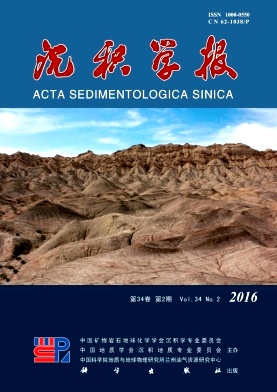Distribution and Sources of Trace Metals in the Surface Sediments of Prydz Bay, Antarctica
doi: 10.14027/j.cnki.cjxb.2016.02.009
- Received Date: 2015-05-05
- Rev Recd Date: 2015-06-15
- Publish Date: 2016-04-10
-
Key words:
- Trace metal /
- Biogenic source /
- Lithogenic source /
- Sediment /
- Antarctica
Abstract: Trace elements in marine sediment can be used to reflect anthropogenic influence on marine systems, to trace the origin and transformation of the marine substances, to indicate sedimentary environment and early diagenesis, and even to reconstruct the global change of climate. However, studies of trace elements in marine sediments are rarely reported from east Antarctica. In this case, sixteen surface sediments were collected during the 21st to 27th cruises of Chinese Antarctic Expedition in order to investigate the distribution and source composition of trace elements in the surface sediments from Prydz Bay and east Antarctica. Samples were analyzed using ICP-MS to determine the content of trace elements in the bay. Combined with biogenic silica and grain size of the sediments, the sources of trace elements were discussed based on the enrichment factors and principle component analysis. The results show that the trace metal contents range from 7.9 to 75.6 μg/g for Cu, from 6.7 to 39.0 μg/g for Pb, from 32.8 to 96.6 μg/g for Zn, from 0.25 to 0.44 μg/g for Cd, from 28.0 to 78.2 μg/g for Cr, from 5.1 to 17.8 μg/g for Co, from 1.26% to 3.22% for Al, from 1.31% to 3.30% for Fe and from 158 to 638 μg/g for Mn. The metal contents in the surface sediments from Prydz Bay are comparable to those obtained from the other regions of the Southern Ocean. The contents of Cu, Zn, Cr, Co, Fe and Mn are higher in the open sea and continental slope area; the contents of Al and Pb are higher at the edge of Amery Ice Shelf; while the contents of Cd are higher in the continental shelf area. Pb, Zn, and Cd are significantly enriched in all studied sites; no obvious enrichment is observed for Cu, Cr, Co, Fe and Mn from ice shelf edge and continental shelf area; while all trace elements are variously enriched in the sediments from continental slope and open sea area. The main sources of the trace elements in Prydz Bay are mineral particles derived from the erosion and weathering of the surrounding basement, and marine biological deposition. The trace metals at the edge of the ice shelf and site of P2-9 are primarily from local sourced lithogenic inputs. The trace metals of Cu, Zn, Cr. Co. Fe and Mn in the areas of continental shelf and deep sea are significantly influenced by biological input. The trace element of Cd in the sediments from the bay is suggested to be mainly from biogenic sources, which is assimilated by diatom through the uptake from the water column in the euphotic layer and settled down on the marine floor associated with biogenic silica in the body remains.
| Citation: | SUN WeiPing, HU ChuanYu, HAN ZhengBing, WENG HuanXin, CHEN JiYu, PAN JianMing. Distribution and Sources of Trace Metals in the Surface Sediments of Prydz Bay, Antarctica[J]. Acta Sedimentologica Sinica, 2016, 34(2): 308-314. doi: 10.14027/j.cnki.cjxb.2016.02.009 |






 DownLoad:
DownLoad: